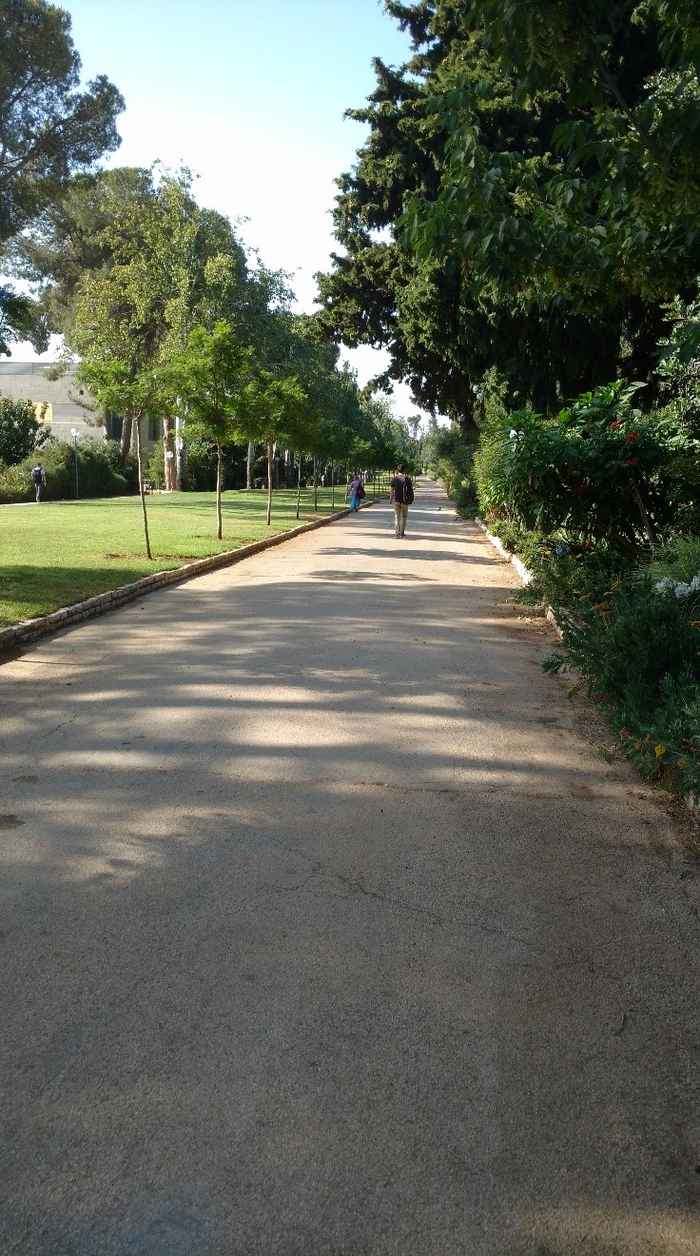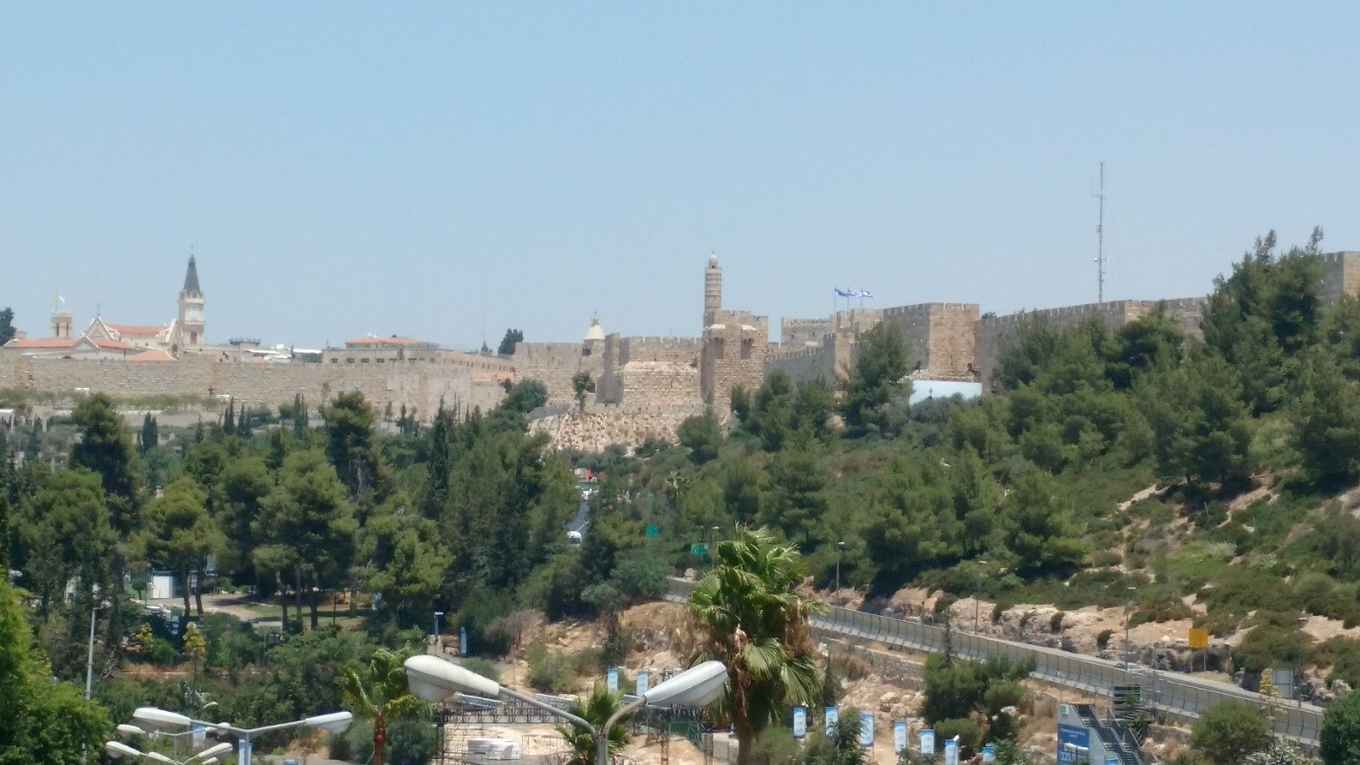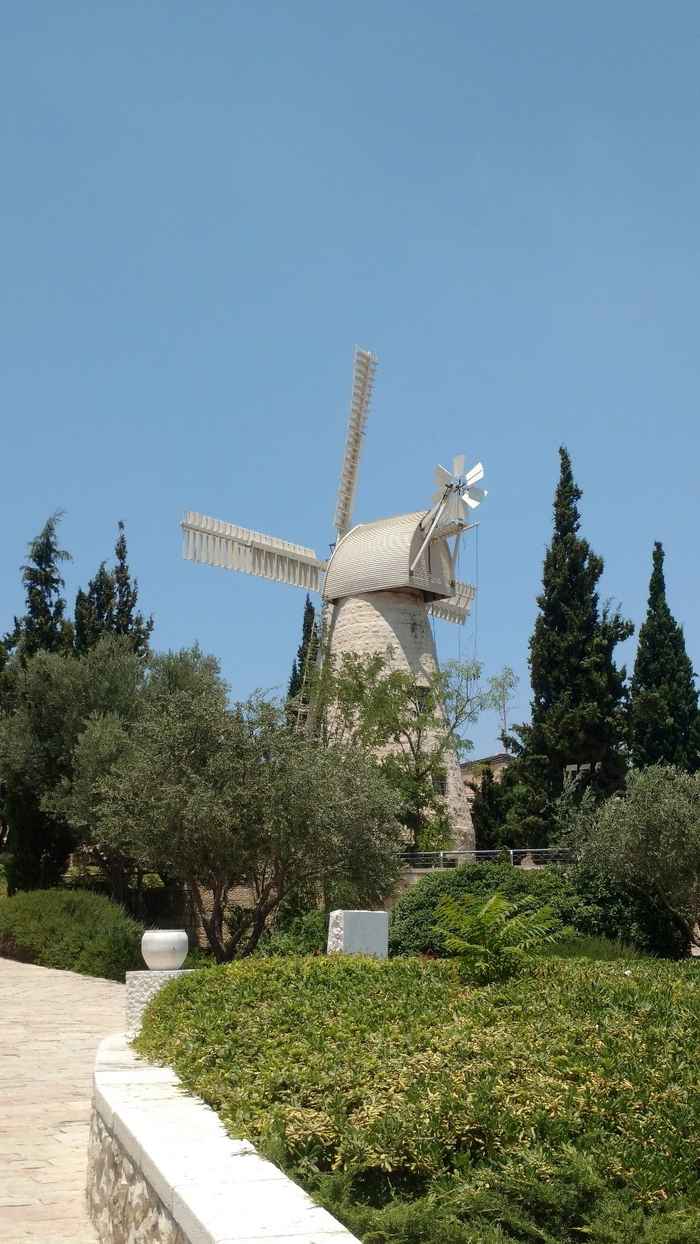A catalysis research project in Jerusalem
Upon my arrival at Tel Aviv international airport, I was greeted with very warm and dry weather. It took me half an hour by train to arrive in Jerusalem, where the temperature was even higher and the air much dryer. The first night I had a lot of trouble falling asleep, since the temperature in Jerusalem never goes below 18 °C, even at night.

The next morning, I took the bus to the Edmond J. Safra Campus of the Hebrew University of Jerusalem. Upon arrival, I had to go through a security check, which was something I was not accustomed to in the Netherlands.
At the chemistry building, I was greeted by my supervisor Dr Elad Gross. I was shown around the offices and the labs and the first few days were filled with applying as a visiting research fellow.
During my master's project, I had synthesised catalysts and tested them for the oxidation of cyclohexene with molecular oxygen. Although these catalysts showed high conversion rates, their selectivity was rather low. In order to understand the reaction mechanism behind this, I repeated the catalytic reactions at the Hebrew University while using an in-situ IR set up to measure the intermediate reaction products.
Redesigning and rebuilding the IR system
My catalysts had already been sent to Jerusalem but the IR setup prevented me from performing immediate measurements since it was not possible to use cyclohexene. So, the first week was spent redesigning and rebuilding the IR system to allow cyclohexene to flow over the catalyst.

We ended up adding a bubbler that would allow for the introduction of cyclohexene by means of a carrier gas flowing through the liquid. Unfortunately, during the rebuilding of the system, we were hit with several setup issues and we had to rebuild the entire system two times over.
Finally, the system was successfully built without leaks and we could start the IR measurements of the reaction. During my project, I did a lot of measurements with a variety of parameters and obtained some interesting results. We had a lot of difficulties observing any intermediates on the surface, as most of the reactant was present in the gas phase. However, in the end, we managed to observe a potential intermediate, which was different from the compound we had previously believed to be the intermediate.
A beautiful campus
My entire project in Jerusalem took place at the Edmond J. Safra campus. It houses a lot of different research groups, such as physical chemistry, organic chemistry, and life sciences. Within the university, there is a clear distinction between renovated labs and older labs. I worked in a renovated lab, but during my project, we had to borrow some chemicals from another group occupying an older lab. Although the older labs were impressive, I prefer the renovated labs. The Edmond J. Safra campus also features a “nature walk” allowing you to see some of the beautiful flora of Israel and even some animals roaming the campus. During my stay, I got to see a wild porcupine as well as some wild jackals.
Visiting Jerusalem as a tourist

In the weekends, which in Israel consist of the Friday and Saturday, I got to discover Jerusalem, the sacred city for many religions. Built on a mountain, Jerusalem offers a lot of amazing views. I was fortunate to stay at an Airbnb that was located near a lot of impressive and significant sights. It was also near a place called the first station, which is an old train station that has been refurbished as an outdoor mall. There is live music pretty much every night and it houses some amazing places to eat. Furthermore, slightly further on a hill is something that really tickles my Dutch heart: a windmill.
I also went to the old centre of Jerusalem, which is one of the most impressive places I have ever been to. The old city is divided into four quarters and each of these is very different from the others. I was able to view everything while I was there, but I avoided going outside around noon, as the sun in Israel is very intense.
The language barrier

The main language spoken in Israel is Hebrew and although many people speak English, there are people that don’t. For the research group in which I was working, it proved to be difficult to communicate in English exclusively. Fortunately, every now and then I heard people suddenly saying ‘let’s switch to English so Peter can join the conversation’. Being Dutch, I understand that speaking in your native tongue is a natural thing to do so I didn’t let this 'language barrier' bother me.
During my project, we also went on a group trip to the Israel Museum, where we got a tour of the labs dedicated to art restoration. We got to see some of the art pieces that were being prepared for future exhibits. The woman showing us around would often start explaining things in Hebrew before someone would interrupt her and ask her to please switch to English. Overall, it is possible to get by in Jerusalem without learning Hebrew, but things like grocery shopping can prove to be a challenge.
Overall thoughts
Jerusalem is a very impressive and awe-inspiring place to visit and if you are thinking of going I can highly recommend it. I found the research mentality in Israel to be similar to the mentality in the Netherlands. However, in the Netherlands, there are far stricter rules when it comes to safety and disposal of chemicals, which took me some getting used to. Furthermore, the masters at the Hebrew University of Jerusalem mainly consists of a two-year research project, during which you have to take some courses. So if you are thinking of doing a Masters abroad that focuses on research over courses, Jerusalem is the place to go.
Peter Jungbacker